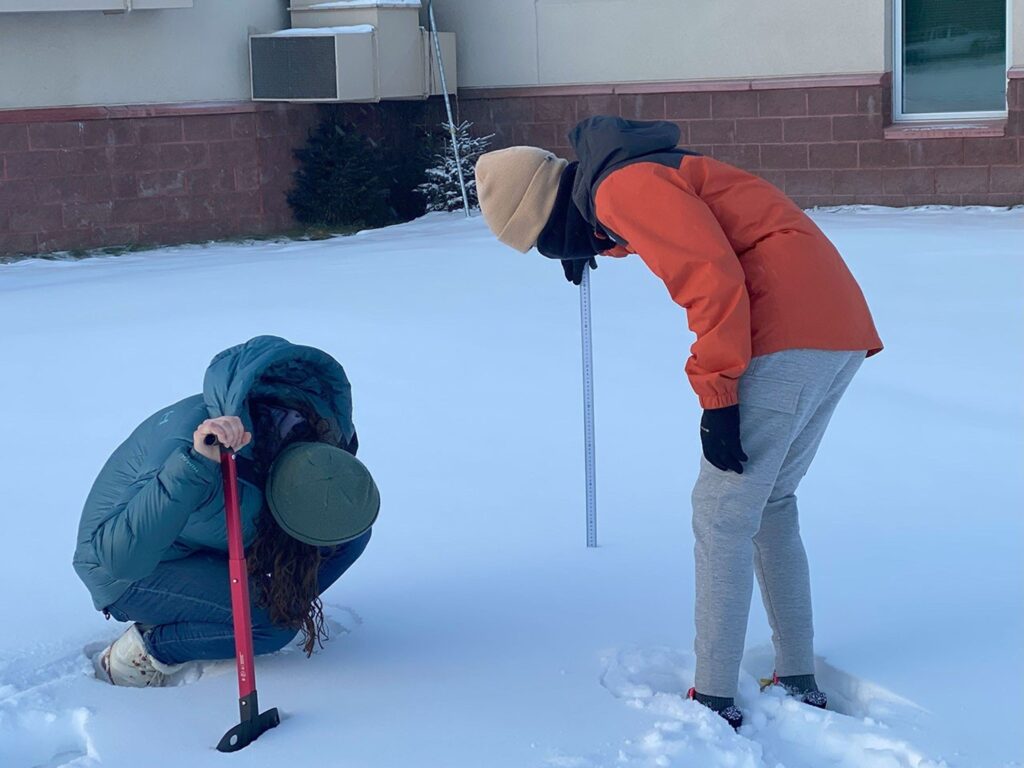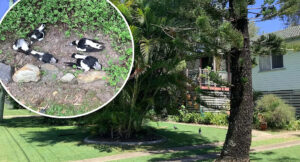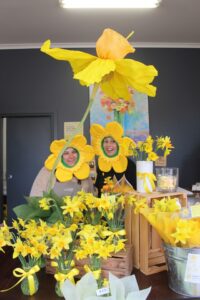
Seasonal snow plays a critical role in global water and energy cycles, providing essential resources for billions of people worldwide. The snowmelt is vital for water supply, hydropower, agriculture, and more. Monitoring snow water equivalent (SWE) is crucial for supporting these applications and mitigating damages from snowmelt flooding, avalanches, and other snow-related disasters. However, measuring SWE remains challenging, especially in northern latitudes where in situ SWE observations are sparse, and satellite observations are hindered by the boreal forest and environmental conditions.
Despite limited in situ SWE measurements, local residents in Arctic and sub-Arctic regions contribute a vast and valuable body of place-based knowledge and observations that are essential for understanding snowpack behavior in northern regions. This development follows a collaborative effort by NASA and local Alaskan communities to enhance snow science through a blend of satellite data and community insights.
NASA’s Collaborative Effort in Alaska
As part of a joint initiative involving NASA SnowEx, NASA’s Minority University Research and Education Project (MUREP) for American Indian and Alaska Native STEM Engagement (MAIANSE), and the Global Learning & Observations to Benefit the Environment (GLOBE) Program, a team of scientists is studying SWE across Interior Alaska. The team includes NASA intern Julia White from NASA Goddard Space Flight Center and University of Alaska Fairbanks, alongside Carrie Vuyovich, Alicia Joseph, and Christi Buffington.
This project combines satellite-based interferometric synthetic aperture radar (InSAR) data, primarily from the Sentinel-1 satellite, with ground-based observations from the Snow Telemetry (SNOTEL) network and GLOBE. Together, these data sources help the team investigate how SWE varies across the landscape and its impact on local ecosystems and communities. The team is also preparing for future integration of data from NASA’s upcoming NISAR mission, which is expected to enhance SWE retrieval capabilities.
Engaging Alaskan Youth in Snow Science
In November 2024, a collaborative visit to Tammie Kovalenko’s classroom at Delta Junction Junior and Senior High School marked a significant step in engaging local youth in snow science. Students in vocational agriculture classes, including members of Future Farmers of America (FFA), began collecting GLOBE data on a snowdrift located just outside their classroom. As the project progressed, students developed their own research questions, leading to remarkable educational outcomes.
One student, Fianna Rooney, took the project further by presenting research posters at both the GLOBE International Virtual Science Symposium and FFA Regional and National Conventions. Her work underscores the growing role of Alaskan youth in science and how student-led inquiry can enrich both education and research outcomes. This initiative was funded by the NASA Science Activation Program’s Arctic and Earth SIGNs project at the University of Alaska Fairbanks.
Expanding Research Through Community Collaboration
In February 2025, the team collaborated with Delta Junction Junior High and High School students and the Delta Junction Trails Association to conduct a GLOBE Intensive Observation Period (IOP) titled “Delta Junction Snowdrifts.” The effort involved collecting landcover photos, snow depth, and SWE data. Thanks to aligned interests and research goals at the Alaska Satellite Facility (ASF), the project expanded into Spring 2025. Collaborators from ASF and the Alaska Center for Unmanned Aircraft Systems Integration (ACUASI) collected high-resolution airborne data over the snowdrift at the Delta Junction schools.
This complementary dataset helped strengthen connections between satellite observations and ground-based student measurements. The move represents a significant advancement in integrating diverse data sources to better understand snow dynamics in Alaska.
Looking Ahead: Integrating Indigenous Knowledge
The next steps will involve collaboration with Native Alaskan communities near Delta Junction, including the Healy Lake Tribe. Their vast, generational knowledge will be invaluable in deepening the understanding of Alaskan snow dynamics. The integration of Indigenous knowledge with scientific data represents a holistic approach to environmental science, potentially offering new insights into climate change impacts and adaptation strategies.
This effort, led by a NASA intern, scientists, students, and Alaskan community members, highlights the power of collaboration in advancing science and education. As these initiatives continue to unfold, the combination of satellite technology and community engagement may serve as a model for other regions grappling with similar environmental challenges.







